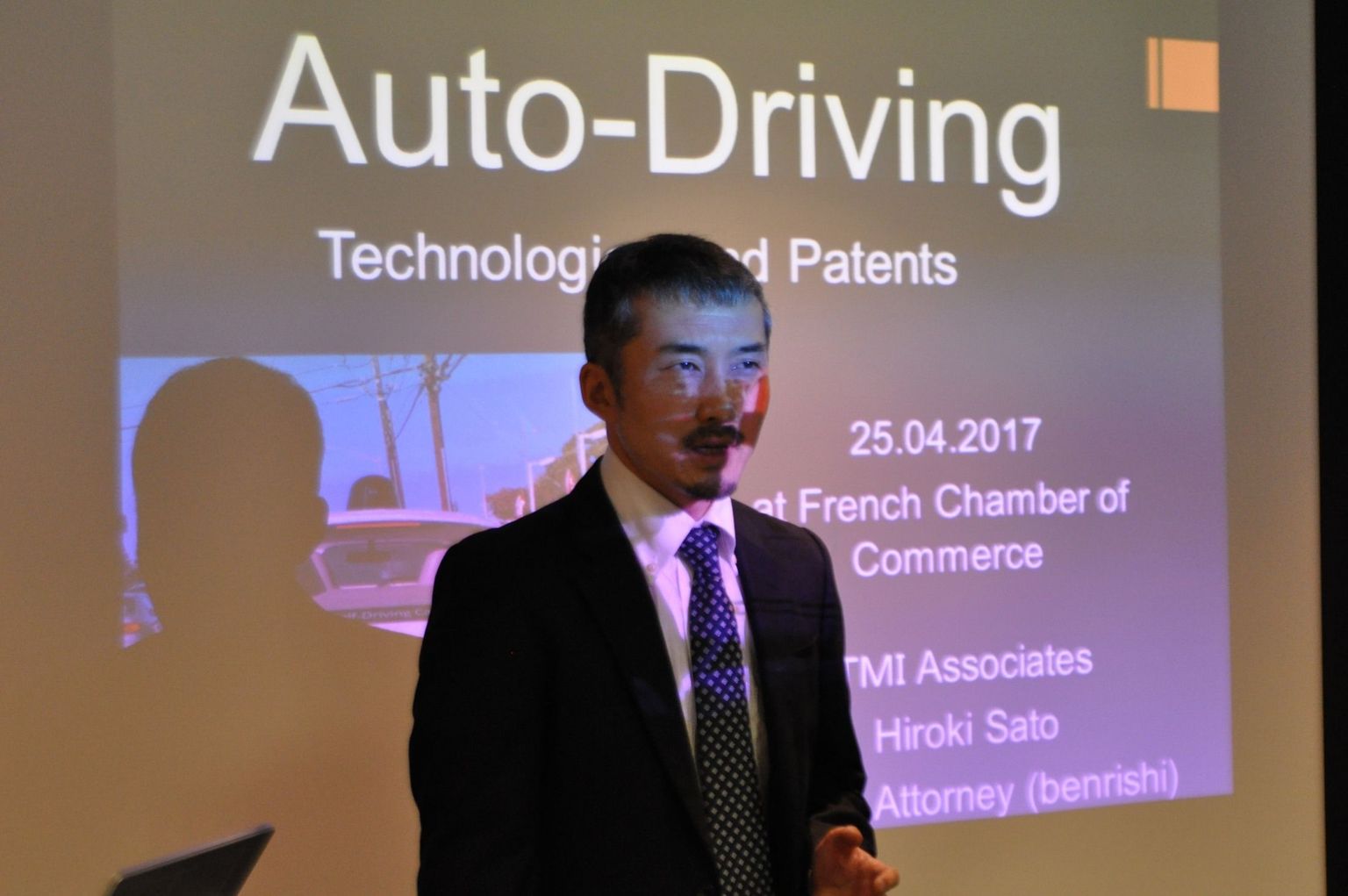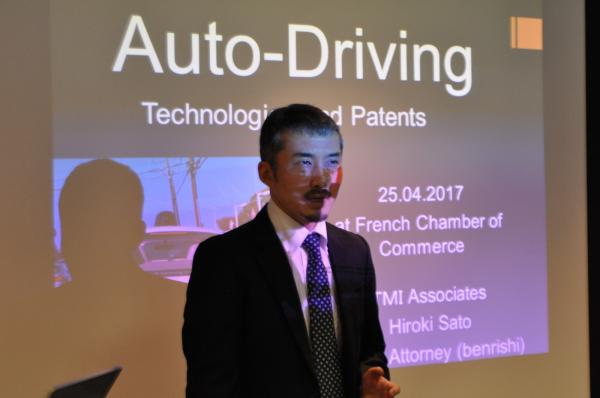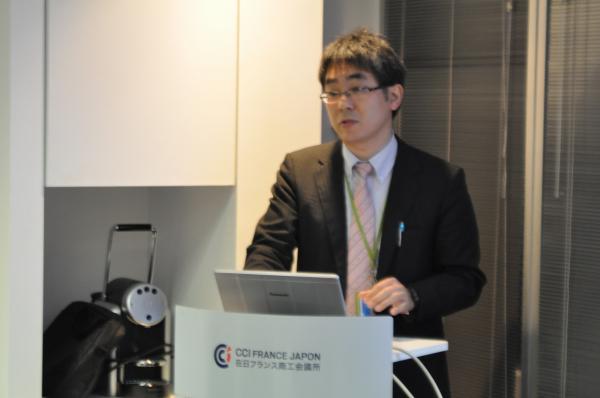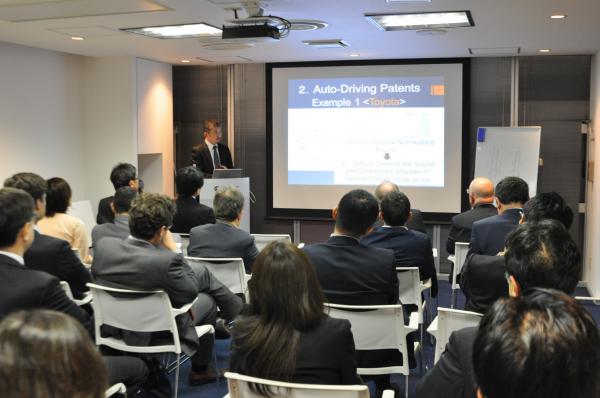Informes de eventos • Comités • Event report • Committees • Tidigare event • Kommittéer • Balanço Eventos • Comissões • Rendezvény beszámolók • Klub • CCIFJイベント • 委員会 • Tidligere arrangementer • Komitéer • Etkinlik raporları • Komiteler • Bilantul evenimentului • Grupuri de lucru • Referat fra arrangementer • Komiteer • Terugblik op evenement • Panels • Izveštaji sa događaja • Odbori • Огляд заходів • Комітети • Отчет о мероприятиях • Απολογισμός εκδηλώσεων • Επιτροπές • Комитеты • 행사 • 위원회 • Raportit tapahtumista • Komiteat • Naše podujatia • Výbory • Равносметка за събитие • Комитети • Përmbledhja e eventeve • Komitete • Ze života komory • Platformy • Rückblick auf... • Komitee • Bilans d’évènement • Comités
The business of the future: auto-driving cars and their legal issues in Japan

On April 25, 2017, the Tax and Regulations Committee, chaired by Philippe Dalpayrat, welcomed TMI associates and attorneys-at-law Kazuyasu Shiraishi, Shinsuke Masuda and Hiroki Sato at the French Chamber for a conference on the business of auto-driving cars, its regulations and legal issues for Japan.
Kazuyasu Shiraishi stated that the main obstacle in auto-driving car development is the coexistence between ITS (Intelligent Transport System) and human drivers. If there were only autonomous vehicles, total safety on the road would be possible even with current technology.
The main advantage of auto-driving cars is the increase of overall security – for public transport, it will mean an increase in energy saving and a decrease in costs – as well as the potential shift in car development and concept: being design-oriented, automobiles will see their shapes changed depending on their main usage (resting, working, etc.), or their passengers (children, seniors, etc.).
Kazuyasu Shiraishi explained the five levels of automatic driving: level 1 means there is one automatized process in the car (acceleration, braking or steering), level 2 means two of these processes are automatized, and so on. The driver is able to take control at any moment, but at level 5 this is not even an option since the car has no steering wheel. Because of a different approach to car usage – more playful in Europe and Japan, and more utilitarian in the US – Europe wants to go up these levels progressively whereas the US seems to be ready to skip levels 2 and 3, and Japan plans to commercialize level 3 in 2020 and level 4 in 2025.
Patent attorney Hiroki Sato told the story behind the evolution of ITS. Even though the years from 1930 to 1940 are called the “dawning era of auto-driving”, actual development started ten years later. From 1950 to 1960, the first autonomous cars worked with magnetic fields and induction cables located on each side of the street. This was deemed too expensive, and from 1970 to 1980, machine vision technology was introduced and vehicles started detecting objects on the road. The years from 1980 to 1990 saw the birth of multi-vehicle coordinated control, and in the 2000’s the main technology behind auto-driving cars has been the GPS. Problems that remain unsolved are occurrence of unexpected situations such as a sudden change of lanes by vehicles, and pedestrians or bicycles suddenly rushing into the street, although technology overcoming these situations is developing at very high speed.
The companies that own the most patents in this business are Toyota, followed by Denso, Bosch, Nissan and Honda (Google is ranked 19th). “The strategy behind patents is finding new issues and solving them, or merging various fields, such as insurance [and auto-driving car business] for example” stated Hiroki Sato.
At present, if an accident were to happen with an auto-driving car, the car maker is exempted from their liability unless all three following conditions are verified:
1. The driver was careful and attentive of its surroundings;
2. The victim was not neglected;
3. The vehicle had a structural defect or suffered a functional impairment.
On another hand, with no applicable law at the moment, anyone can carry demonstration experiments in Japan in authorized areas.
The legal questions created by this business are multiple. If there is an accident during the transition of control between the ITS and the driver and there is a victim, whose responsibility is it? Major ethical issues arise as well: when the ITS is confronted between sacrificing the passenger or the pedestrian, who should it choose? Should it be given the choice when both possible outcomes of its actions will cause the death of a victim? If so, which victim should it spare and who should be responsible for such choice and its consequences? Other issues include cyber-attacks, as hackers could remotely take control of autonomous cars. Civil liability, criminal liability and liability under administration regulations for each of the five levels must be thoroughly defined.





